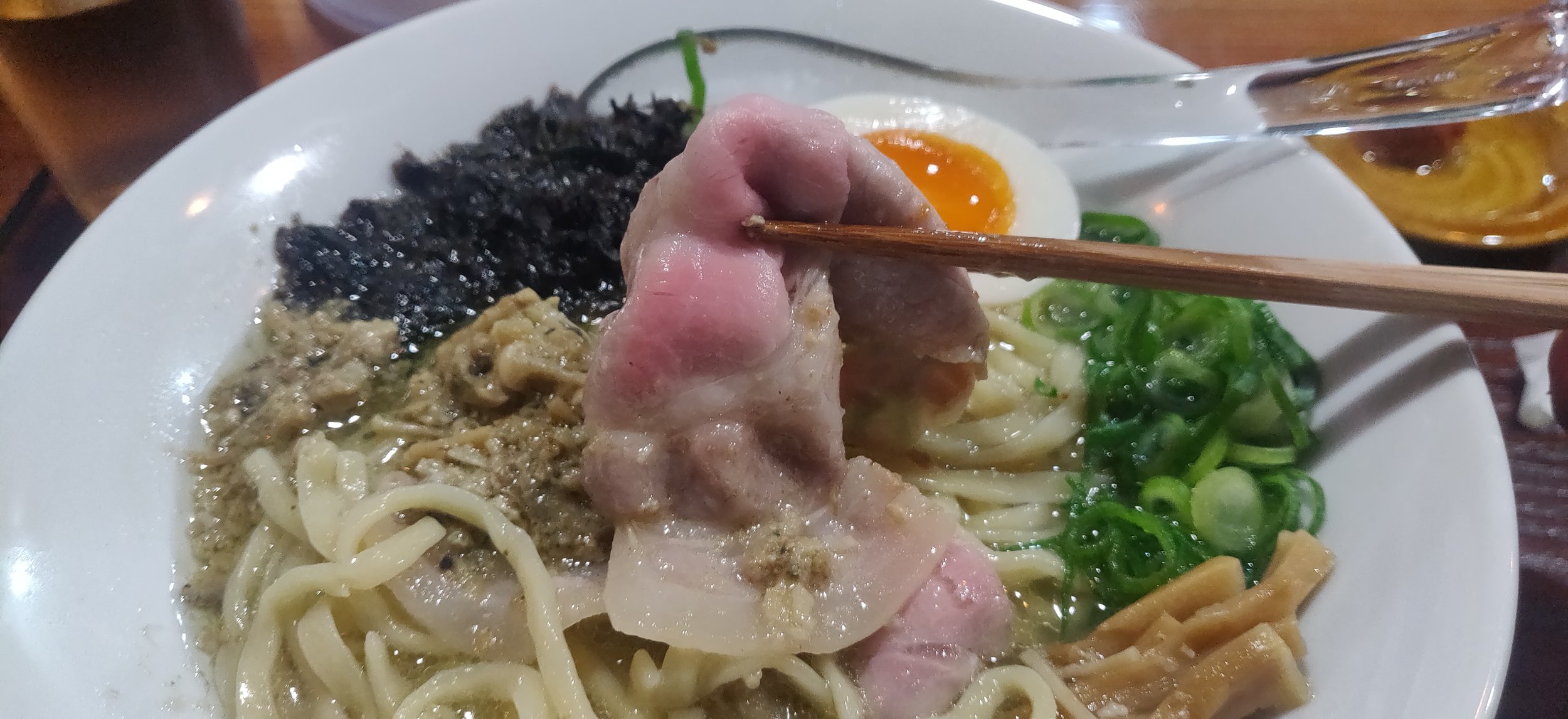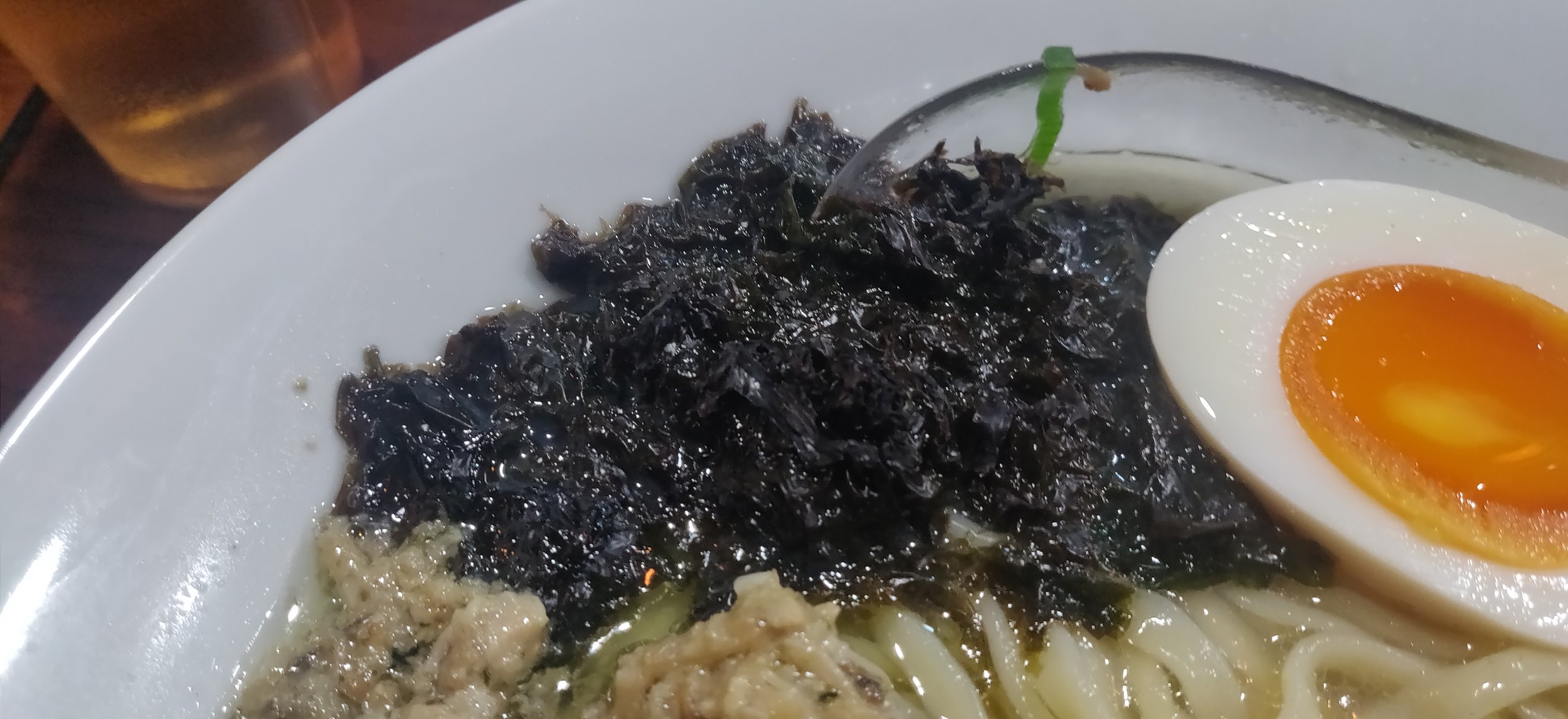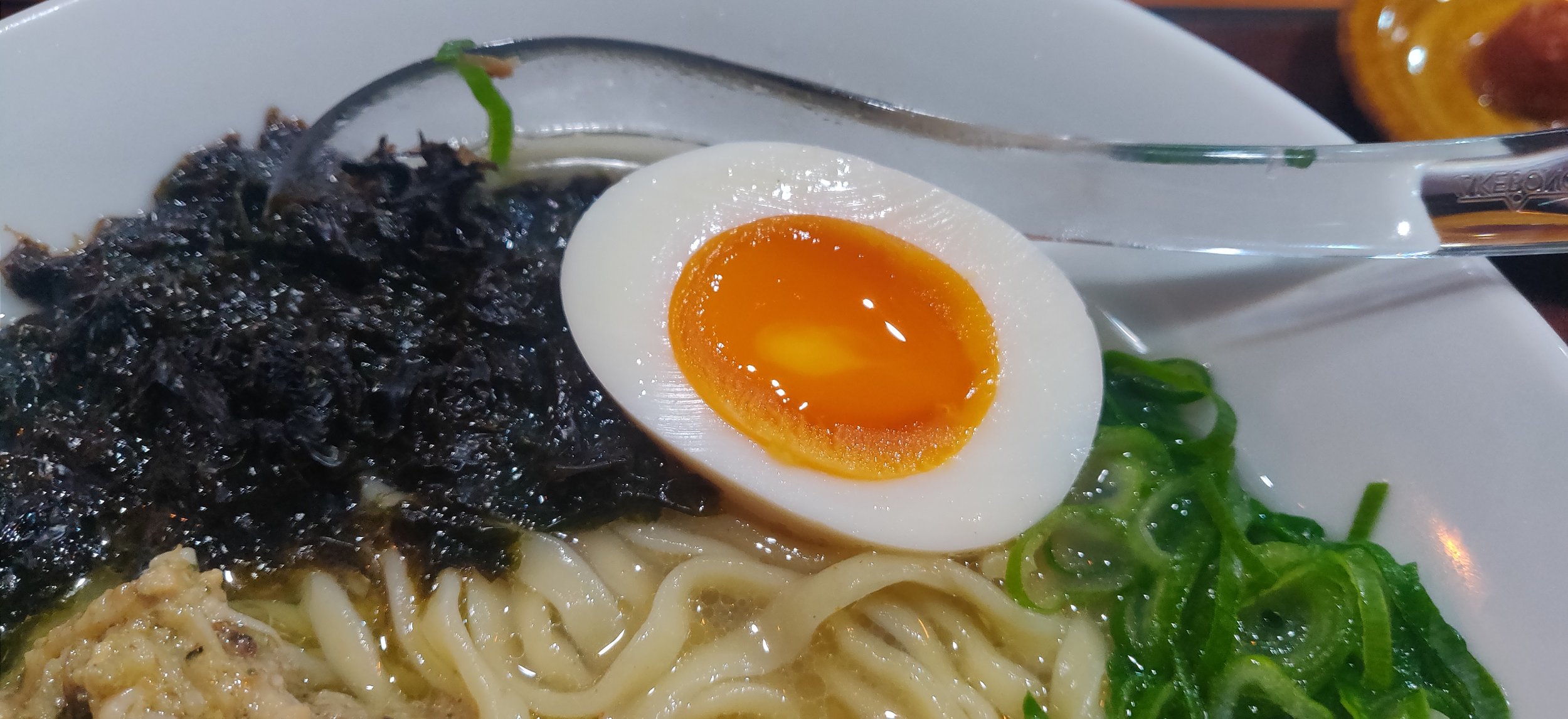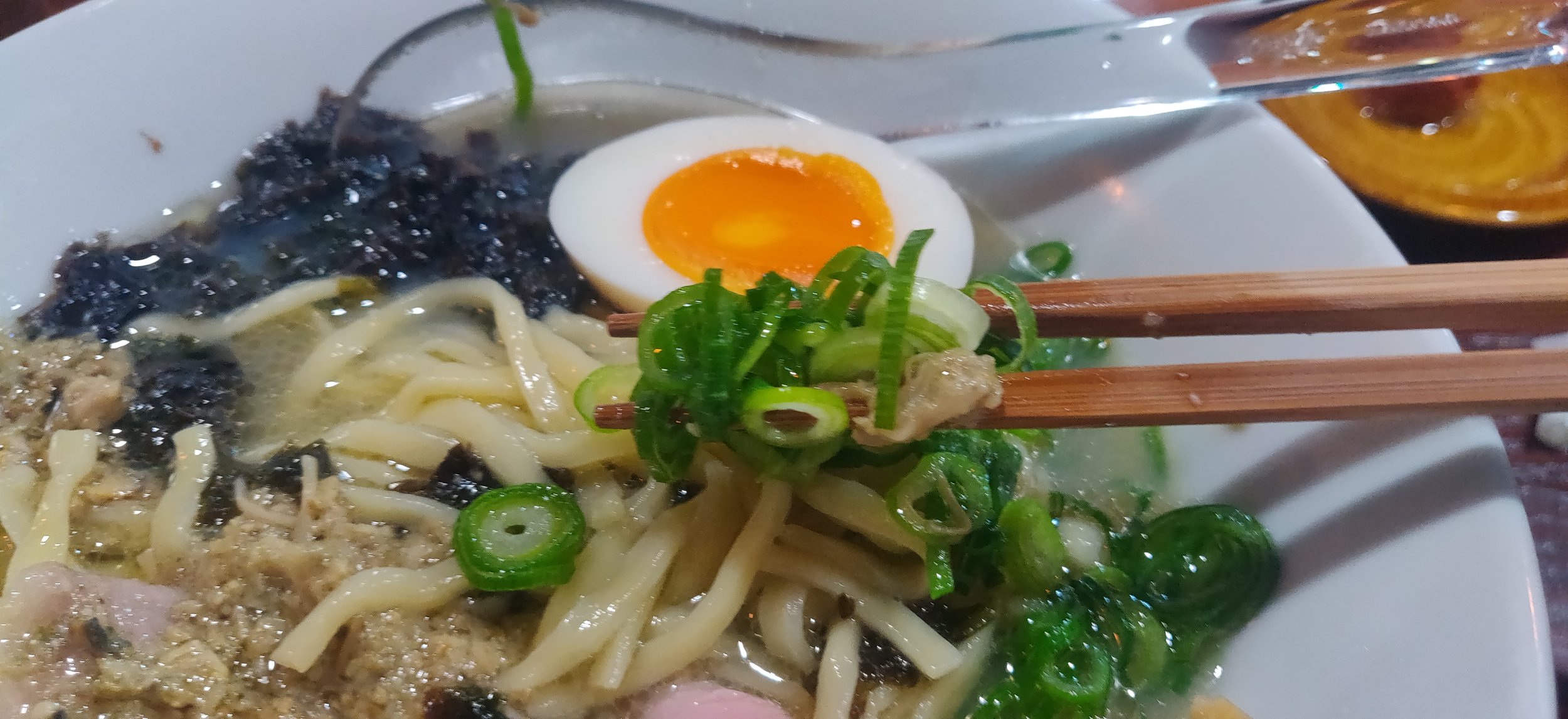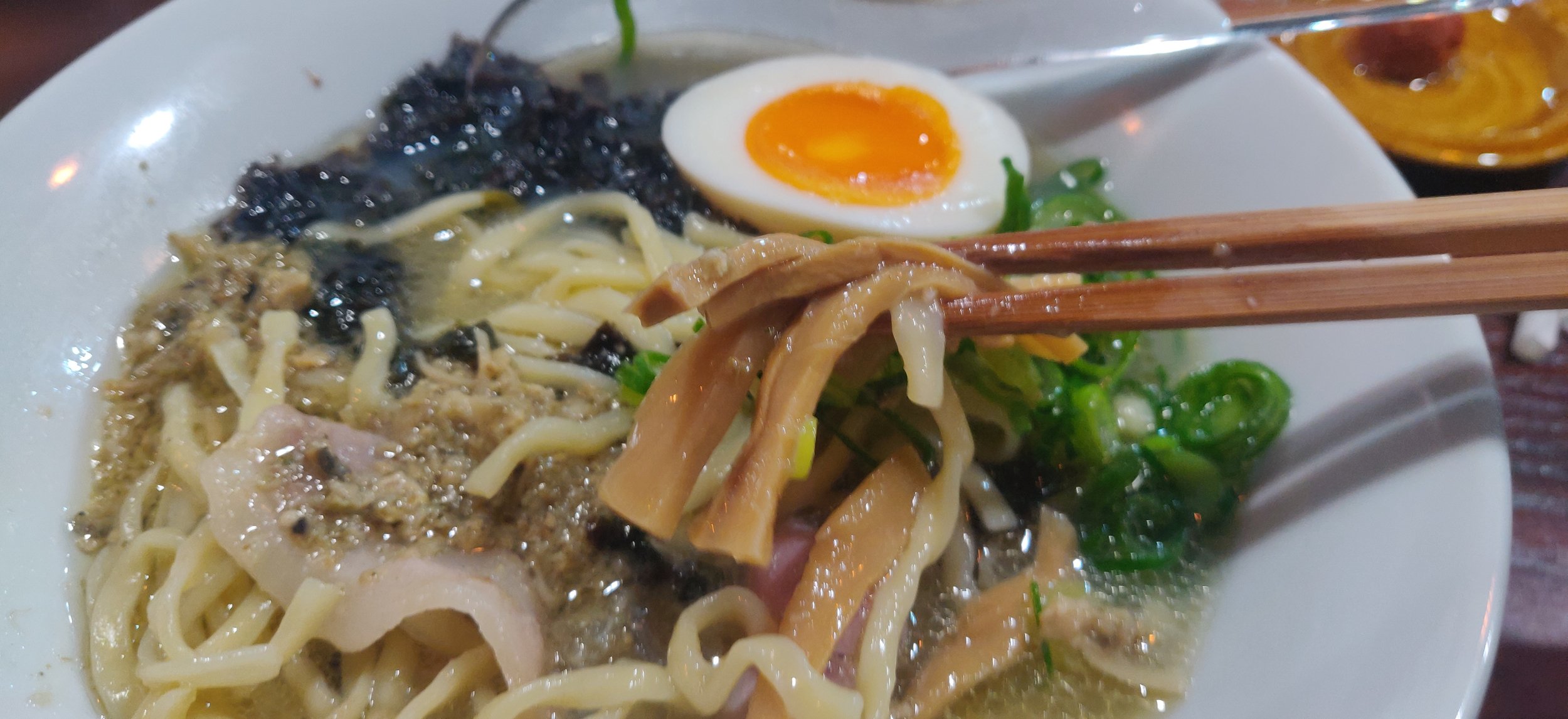Mukan (むかん): Favorite Bowl of 2022; Nakano Sakaue, Tokyo
I don’t usually make such bold declarations, but I have to give praise when praise is due. Mukan was without a doubt my favorite bowl of 2022.
Before I waste your time with this review, I’ll preface this by saying, I absolutely love oyster based ramen….so maybe there’s a bit of a preferential bias here. However, unless you have a shellfish allergy or can’t eat oysters, I can put my bias aside and say this is definitely a bowl worth carving out your schedule for, even those here in Japan for a short holiday. It’s currently reservation only, but a lot easier than Tomita or Iida Shoten so shouldn’t be too difficult to get yourself a seat (for now). Mukan takes reservations from 9pm the previous evening here and is limited to 4 guests per time slot. I recommend getting on the site about 2-3 minutes before 9pm and refresh as soon as the time comes if you’re looking for a spot during lunch. If you’re ok with either lunch or dinner, dinner is usually a lot easier to secure a spot.
So typically they have only one ramen item on their menu and it’s announced on Twitter the day before. Most days it’s the pictured Tokusei Kaki Shio Ramen or Oyster Salt Ramen with extra fixings, but they do have times where they put out a special, gentei menu item so be sure to check before you make your reservation. In addition they have beer for 500 yen, which seems steep at first, but does come with a generous serving of pork chashu on the side as an appetizer, but that’s about it. No translations on the ticket machine today, I trust you can figure out which of the two is ramen and beer, but to be on the safe side, just order both (if you’re of drinking age, 20 in Japan just fyi).
Master prepares every bowl to order and makes the ramen two at a time. If you’re the impatient type, try and come 10 minutes before your reservation time so you can be the first of four seated. Even if you have to wait, as you can see, the presentation for these bowls are gorgeous and once the bowl is finally in front of you, you’ll see that it was worth every painstaking second you had to sit through, surrounded by the aroma of this hypnotic soup. Again, it’s oyster base and you’ll immediately be hit with the puckering, savory, umami enriched goodness that these plump shellfish bring forth. It is then combined with a pretty pungent shio (salt) tare seasoning that brings out both the sweetness and salinity of the oysters. From there it’ll be an onslaught of flavor jabs and punches all the way up until the last drop, mixing in Ajihens (mid meal flavor changes) along the way.
After taking a few sips as is, go ahead and attack the enoki and oyster reduction on the left. It’s quite possibly one of the most savory ramen toppings I’ve ever had and it pushes the oyster intensity to 11. From there mix in a bit of the homemade spicy red miso paste which brightens the soup just a bit to kick in some heat to your taste buds. Not to worry though, the master does give you a separate plate to put the miso if you’re not a fan of spice, but I definitely recommend adding at least a bit of it to taste how the soup evolves with this heat. Finally you’ll have a bit of Budo Sansho at the table, a type of green Japanese sansho peppercorn. When ready for harvest, these peppercorns bunch up and look like mini grapes which is where the name (Budo is Japanese for grapes) comes from. Unlike the Chinese Szechuan counterpart, Japanese sansho is a bit more acidic and it gives this soup a vivid brightness that’s unlike anything I’ve ever had. You’d be doing yourself a disservice if you don’t try your ramen with a couple shakes of this ground spice so definitely add it in before you’re done.
Once you’ve enjoyed some of the soup, go on and slurp those noodles. Strands here have a prominent flour aroma which permeate with each bite. I love how it pairs with this soup and the cling here is on point. You might be able to tell from the photos, but these noodles are cut flat and have a slight curl to them. It makes for a satisfying slipper slurp, but also ensures you’re tasting every bit of this decadent soup.
And while the soup with ajihen and the pairing with noodles wasn’t enough for you, the master prepares a beautifully cooked pork chashu, perfect jammy soft boiled egg, dried seaweed, menma, and cuts of kujo negi. Honestly felt like everything was in balance here and even getting just half an egg felt like it was the perfect ratio of topping to noods. I loved the crunch of the menma, but the contrast of the chewy noodles and the soft pork chashu was the highlight for me here.
Long time followers know that I rarely make repeat visits, but this was one I visited three times in a month. If that isn’t enough praise, read the ramendb and Tabelog reviews as it seems to be picking up in popularity in the Japanese foodie community. Regarldess of whether you’re a tourist just visiting for a few days, or living here looking for the next bowl of ramen, look no further than Mukan. I guarantee it’ll blow your socks off.




